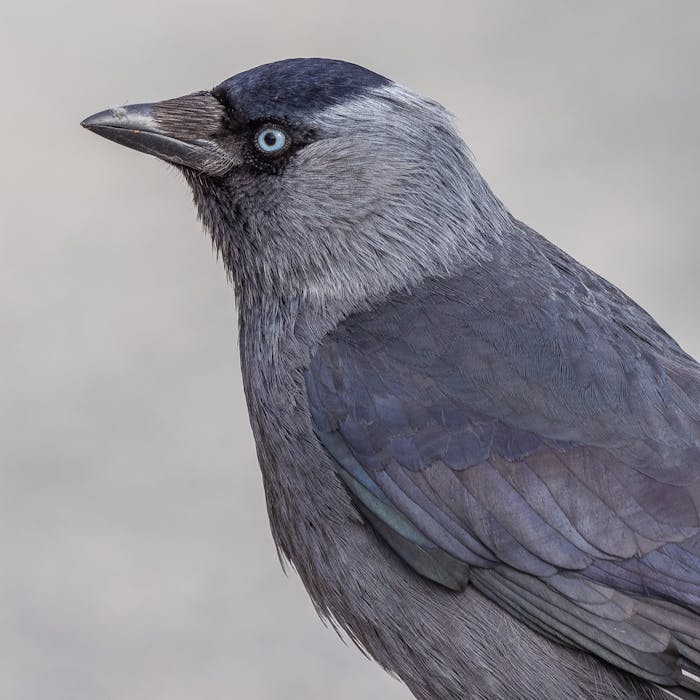
Jackdaw - our clever companion in the townscape
The jackdaw is Britain's smallest crow, with a distinctive silvery sheen to the back of its head. It is a bird of woodland, parkland, coasts and urban areas, with a reputation for being curious, adaptable and a good survivor.
As a sociable bird, travelling in flocks, the jackdaw is most likely to be confused with the similar rook, also part of the crow family. However, the rook is a larger bird, nesting in colonies in tall trees in rural or semi-rural areas, whereas the jackdaw is more tolerant of heavy human presence and can be found nesting on town chimney pots and exploring city scaffolding and scavenging for food discarded by humans.
The jackdaw call is a familiar hard 'tchack' call from which it may have earned its name, although it more probably comes from two separate words: 'Jack' meaning rogue (it is a well-known thief) and 'daw', which is an imitation of its call.
It nests in holes in trees, and on cliffs and buildings, and its traditional diet is invertebrates, fruit, seeds and carrion, and occasionally eggs and nestlings from other birds.
Flocks of jackdaw can often be seen performing aerial acrobatics.
Like all the crows, Jackdaws are inquisitive and intelligent birds, and can easily pick up tricks and new skills in the wild as well as in captivity, and from their interaction with humans. A tame jackdaw was once reportedly trained by some thieves to steal money from cash machines!
Jackdaws mate for life, pairing-up during their first year, but not mating until the year after. The pair will often sit next to each other, preening.
Further reading
Links to external websites are not maintained by Bite Sized Britain. They are provided to give users access to additional information. Bite Sized Britain is not responsible for the content of these external websites.
